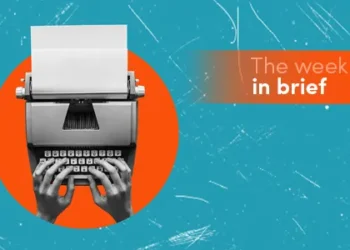In a book from 1970, Simon Ramo observed that tennis was not one game but two, played on the same court with the same rules. In one version, played by the very best players in the world, victory is determined by the player who wins the most points.
In the other version, played by everyone else, success is typically decided by whoever makes fewer mistakes. Ramo termed the second form of tennis a ‘Loser’s Game’ and argued that amateur players wanting to win more matches should spend more time working on their defence than their attack.
In 1975, Charles Ellis applied this framework to finance, suggesting that as markets had become more efficient, they too had become a Loser’s Game, meaning that long-term investing success was less about hitting “winners” and more about avoiding unforced errors.
Our current positioning reflects this desire to steer clear of overcrowded areas of the market that have the potential to cause problems
This mindset feels especially relevant now. With market outcomes increasingly shaped by unpredictable macro events, much of our focus has turned to what not to do: which exposures to avoid, which risks aren’t worth taking and which overbought trade might unwind next.
How we are positioned to avoid costly mistakes
Our current positioning reflects this desire to avoid overcrowded areas of the market that have the potential to cause problems.
We’ve steered clear of expensive credit markets, parts of the equity universe with very high P/E ratios, the US dollar (given valuation and positioning), and trades that rely heavily on carry or short volatility, all of which seem vulnerable to sudden policy or sentiment shifts. In a world of asymmetric risks, defensive thinking is no longer a luxury; it’s essential.
In equities, talk of rotating out of US equities has gained momentum recently, but we were already uncomfortable with the concentration risk in US markets. As a result, we haven’t needed to make abrupt changes recently.
We’ve long preferred diversified exposure across Europe, Latin America and Asia, as well as selective thematic allocations. For us, true resilience in equities comes from owning assets that are not all driven by the same macro or market narrative.
T Rowe Price: Five rules for investing in volatile economic times
In fixed income, we prefer emerging market bonds, particularly those of Brazil, Mexico, South Africa and India, and AAA-rated developed market sovereigns over credit that we feel is expensive.
In addition, we’ve started to cautiously add to the long end of the curve, where yields are now more attractive, which should offer some protection if growth disappoints. We also maintain a position in short-maturity inflation-linked bonds, which would help in the event of renewed inflation — for example, due to tariffs or supply-side constraints.
Around 5–6% of our portfolio is allocated to strategies that are less correlated to equities or bonds. These include quantitative strategies, equity long-short exposures and modest allocations to areas like catastrophe bonds. We also recently took profit on our position in CO₂ emissions for the second time this year — a thematic trade we continue to monitor closely.
In our view, in a market environment increasingly shaped by algorithms and passive flows, it’s critical to have exposures in places that are underappreciated or out of favour. Finally, we have some exposure to gold and other commodities, which provides some diversification without introducing significant directional risk.
Staying focused amid volatility
With so much market noise driven by political tension and headlines, it can be difficult to focus on anything else. Yet many of this year’s strongest performers — from Eastern Europe to Latin America, from nuclear power to European defence — were relatively straightforward to identify for those willing to look past the dominant US narrative.
In a market environment shaped by algorithms and passive flows, it’s critical to have exposures in places that are underappreciated
In today’s environment, however, being deliberate about what to avoid rather than simply going with the crowd has become more important than ever. We believe the key is to avoid letting volatility and news distort a sensible, long-term investment framework. That often means resisting the temptation to react and instead focusing on building a portfolio that can weather a range of outcomes.
The idea of constructing a portfolio that can perform in multiple scenarios is central to our process. We aim to balance a core ‘offensive portfolio’ that can capture upside with a ‘defensive portfolio’ that holds up in periods of volatility or dislocation. That blend has helped us navigate the twists and turns of recent months.
In a world where predicting the next headline is a fool’s errand, our job is to avoid avoidable risks, stay diversified and keep our defence tight. As Ellis put it, many of the big problems you’ll face are probably already in your portfolio — identifying and managing them may be the surest way to come out ahead in the Loser’s Game.
Mario Baronci and Becky Qin are portfolio managers of the Fidelity Global Multi Asset Defensive Fund













